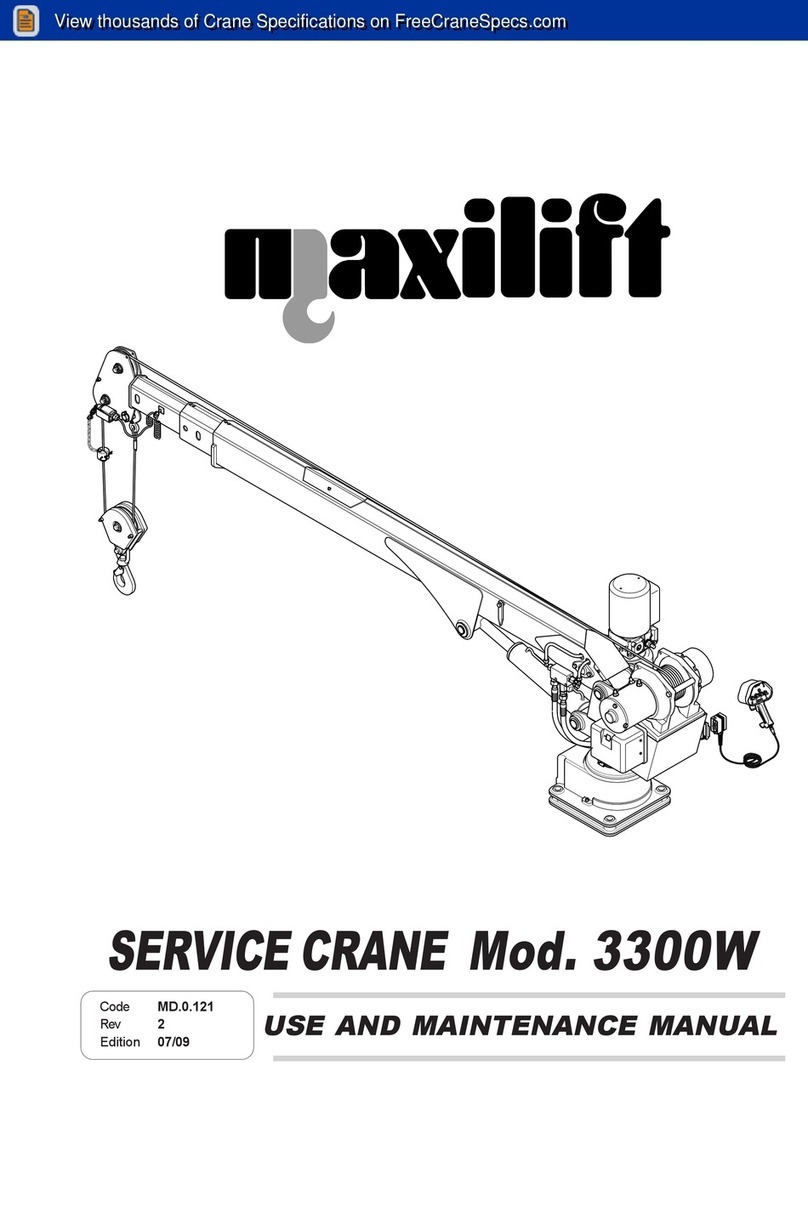Via Mediterraneo, 6 - 42022 - Boretto - Reggio Emilia - Italy
Tel. +39 - 0522-96 30 08 - Fax +39 - 0522-96 30 39
- II -
6.7 Accessories -------------------------------------------------------------------------------------------- Page- 21
6.7.1 Electrical winch----------------------------------------------------------------------------------------------“ ---- 21
6.7.2 Manualwinch ------------------------------------------------------------------------------------------------“ ---- 23
6.7.3 Stabilizer kit ------------------------------------------------------------------------------------------------“ ---- 24
6.7.4 Back load attachment--------------------------------------------------------------------------------------“ ---- 24
6.7.5 Quick fitting kit-----------------------------------------------------------------------------------------------“ ---- 25
6.8 Main operatingerrors ---------------------------------------------------------------------------------------“ ---- 26
7 MAINTENANCE ANDCHECKING --------------------------------------------------------------------- “---- 27
7.1 Protection andstorage-------------------------------------------------------------------------------------“ ---- 27
7.1.1 Shortshutdowns --------------------------------------------------------------------------------------------“ ---- 27
7.1.2 Longshutdowns ---------------------------------------------------------------------------------------------“ ---- 27
8 MAINTENANCE -------------------------------------------------------------------------------------------- “---- 27
8.1 Warnings ------------------------------------------------------------------------------------------------“ ---- 27
8.1.1 Environmentalprotection ----------------------------------------------------------------------------------“ ---- 27
8.2 Maintenance prescriptions --------------------------------------------------------------------------------“ ---- 27
8.3 Maintenance schedule -------------------------------------------------------------------------------------“ ---- 29
8.3.1 Check list before a working session --------------------------------------------------------------------“ ---- 29
8.3.2 Quarterlychecking------------------------------------------------------------------------------------------“ ---- 29
8.3.3 Yearly checking----------------------------------------------------------------------------------------------“ ---- 29
8.4 Loaderservicing ---------------------------------------------------------------------------------------------“ ---- 29
8.4.1 Oil levelchecking--------------------------------------------------------------------------------------------“ ---- 30
8.4.2 Oil change ------------------------------------------------------------------------------------------------“ ---- 30
8.4.3 Wear pads checks and replacement -------------------------------------------------------------------“ ---- 30
8.4.4 Worm gear assembly control-----------------------------------------------------------------------------“ ---- 31
8.4.5 Thrustrotation brake control------------------------------------------------------------------------------“ ---- 31
8.5 Electric winchmaintenance ------------------------------------------------------------------------------“ ---- 31
8.6 Greases and oils reference table ------------------------------------------------------------------------“ ---- 32
9 TECHNICALDATA ---------------------------------------------------------------------------------------- “---- 33
9.1 Craneoveralldimensions ----------------------------------------------------------------------------------“ ---- 33
9.2 Stabilizeroveralldimensions -----------------------------------------------------------------------------“ ---- 33
9.3 Load chart tables--------------------------------------------------------------------------------------------“ ---- 34
9.4 Technical specifications -----------------------------------------------------------------------------------“ ---- 34
9.4.1 Technical data table ----------------------------------------------------------------------------------------“ ---- 34
9.4.2 Table ofweightsforforeseencrane versions----------------------------------------------------------“ ---- 35
9.4.3 Accessories weights table --------------------------------------------------------------------------------“ ---- 35
10 WIRINGAND HYDRAULIC DIAGRAMS ------------------------------------------------------------- “---- 35
10.1 Hydraulicdiagram hand pumpfor liftingcylinder-----------------------------------------------------“ ---- 35
10.2 Hydraulicdiagram hand pump+ valve bank forlifting
and extension cylinders -----------------------------------------------------------------------------------“ ---- 36
10.3 Hydraulicdiagram hand pump+ valve bank for extensioncylinder------------------------------“ ---- 36
10.4 Electro-hydraulicdiagram motor pump for liftingcylinder------------------------------------------“ ---- 37
10.5 Electro-hydraulic diagram motorpump for lifting and extensioncylinders---------------------“ ---- 37
10.6 Electro-hydraulic diagram motorpump for slewing andextension cylinder -------------------“ ---- 38
10.7 Electro-hydraulicdiagram motor pumpfor slewing,
lifting and extension cylinders----------------------------------------------------------------------------“ ---- 38
10.8 Electricalwinch wiringdiagram --------------------------------------------------------------------------“ ---- 39




























